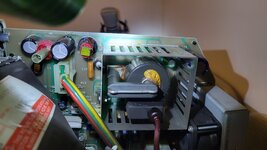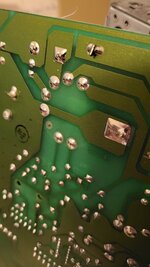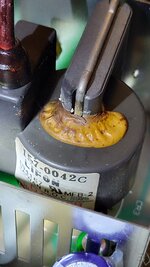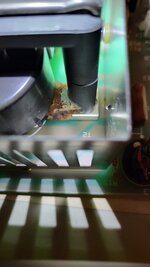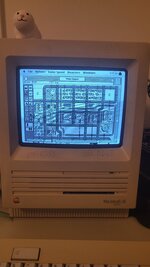xantufrog
Well-known member
Hi all,
I recently acquired an FDHD the other week, and by and large it runs great. The "cheese gear" was bad of course, so I fully cleaned and rebuilt the floppy drive.
I do, however, have a concern that my flyback is failing. I've attached an image here and you can see corrosion/leakage on the left near the base.
The symptom is that periodically the screen will pop, flicker, and/or distort. One time I got a "bomb" popup as it froze. This seems to occur mostly after initial startup - once it's warm the machine (so far) seems stable and happy to run for hours.
No battery leakage, mainboard seems clean.
Thoughts, and advice on best path forward? The other thread I saw on this showed a successful flyback replacement from an NOS kit, but it seems dangerous and hard to come by
Thanks for your guidance!
I recently acquired an FDHD the other week, and by and large it runs great. The "cheese gear" was bad of course, so I fully cleaned and rebuilt the floppy drive.
I do, however, have a concern that my flyback is failing. I've attached an image here and you can see corrosion/leakage on the left near the base.
The symptom is that periodically the screen will pop, flicker, and/or distort. One time I got a "bomb" popup as it froze. This seems to occur mostly after initial startup - once it's warm the machine (so far) seems stable and happy to run for hours.
No battery leakage, mainboard seems clean.
Thoughts, and advice on best path forward? The other thread I saw on this showed a successful flyback replacement from an NOS kit, but it seems dangerous and hard to come by
Thanks for your guidance!

